There are five main types of fishing reels: spincast reels, spinning reels, baitcast reels, conventional reels, and fly reels. Each of these has their time and place with an angler of the right experience and technique.
I have used all five of these across my years of fishing and decided it was time to put together a comprehensive guide detailing the selling points of each of these reels.
By the end of this guide, you’ll be equipped with the knowledge necessary to purchase one of these reels for yourself.
Different types of fishing reels
- Spincast fishing reels
- Spinning fishing reels
- Baitcast fishing reels
- Conventional fishing reels
- Fly fishing reels
Spincast Reels
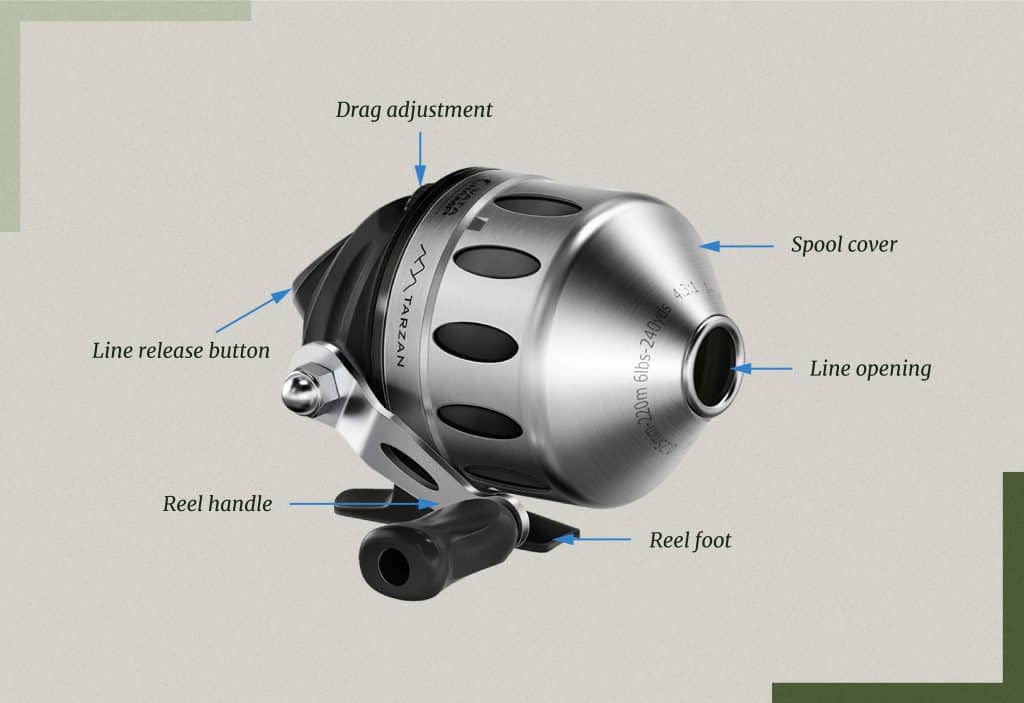
Chances are we’ve all had a spin casting reel at some point in our lives. These are the reels most of us start out with as kids but that doesn’t mean they’re only for kids.
Adults enjoy the simplicity and ease of use of spincast reels as well.
In reality, they’re not that different from a standard spinning reel and they’re highly affordable so many anglers find no reason to ever switch.
Features
Most of us recognize a spincast reel as the one that has a closed face with a metal cone on top. This hides everything inside the reel including the fishing line, gears, and spool.
This helps keep water, dirt, and anything else out of the spool.
As a result, these types of reels tend to last a while and don’t require that much maintenance over time.
I always grew up calling these “push-button” reels because they have a button usually located on the bottom and pressing that will lock the line.
Releasing the button will free the line so you can cast.
Spin casting reels also come with a simple drag mechanism that is controlled using a slider knob.
You can either increase the amount of pressure or decrease it depending on what tackle you’re using and what fish you’re targeting.
Casting with a Spincast Reel
The reason we recommend these fishing reel types to beginners is because they’re easy to cast and the fixed spool design limits any sort of tangling or backlash that you could experience.
They also work for a variety of fishing styles ranging from bass to catfish angling.
You’ll press the button, swing back, and release the button as you swing forward to cast. If you want to lock the line again, press the button and you can start retrieving.
It’s important to keep in mind that while these reels are easy to operate, they do have some cons as well.
Best Practices
While the cone does restrict the amount of crap that can get into the spool, if something does get in there, it’ll stay in there because it won’t be able to fly off the line when you cast.
The small hole at the top of the cone won’t allow anything to come out so it could damage the reel or cause corrosion.
I recommend letting the line breathe when you can and removing the cone to clean the spool occasionally.
One pro is how cheap these reels are. You can get most of them for around $20 but as we all know, there’s a reason for that.
They’re cheaply made and they usually come as a fishing rod and reel combo which means you’re getting a cheap reel attached to a cheap rod.
Finally, casting with spincast reels isn’t as precise or extravagant as any of the other types of fishing reels.
You won’t be able to get long casting distances and you’ll have a harder time getting the lure to go exactly where you want it to.
Spinning Reels

Some may disagree, but I think the spinning reel is the most popular fishing reel type out there right now and has been for some time.
They’re a little more challenging than the spincast but they offer improved casting, more durability, more efficiency, and smoother performance.
Even if you’re a beginner, you’ll have no trouble learning how to cast a spinning reel because their operation is simple but the benefits you get are outmatched.
Features
Most will recognize these as an open face spinning reel and that’s because their design is the same as the spincast with the exception of the cone that covers the spool.
Spinning reels will have a spool in the middle, drag knob on top, and a metal bail that you’ll use to lock and unlock the line.
The bail arm is also important because it will guide the line back onto the spool as opposed to it going through a small hole on the top of the reel.
Another big difference about spinning reels is that they’re operated from the bottom of the rod and the eyelets are on the bottom as well. Spincast and baitcasting reels are placed on top of the rod.
I find that this is a natural and comfortable position. It makes casting much easier and creates less fatigue throughout a day of fishing.
Casting with a Spinning Reel
Casting a spinning rod and reel is a bit more complicated than a spincaster and it takes a little getting used to if you’re switching over for the first time.
You’ll disengage the line by lifting up and releasing the bail. Then you need to press the line up against the rod blank with your pointer finger.
Swing the rod over to the side of your dominant arm or slightly over your head, bring the rod forward, release your finger as you do, and the line will fly off the spool in the direction of your cast.
Now, here’s where you’ll want to pay attention.
Many people think you need to lower the bail back down when the lure hits the water. Don’t do that. Doing so could tangle your line where it runs through the bail and onto the spool.
All you need to do is start reeling in and the bail will close automatically.
Just make sure that your line is positioned properly otherwise make the adjustments before you start reeling in or you’ll get tangled up.
Spinning reels are also the best choice for ice fishing because they’re easy to handle and take well to a variety of different lines.
Best Practices
Spinning reels are my favorite and you can use them in a wide variety of applications.
They work great with small lures and finesse fishing but you can also pair them with a durable braided line and increase their pulling power as well.
They come in an assortment of price ranges between $50-500 depending on the brand and model quality.
I find that the best spinning reels allow you to precisely drop your lure where you want and they help support the sensitivity of your rod as well so you can feel small nibbles but you also get the strength necessary to pull in a large fish like a walleye or muskie.
Don’t miss this video, where we quickly explain the parts of a spinning reel and a baitcasting reel.
Baitcasting Reels
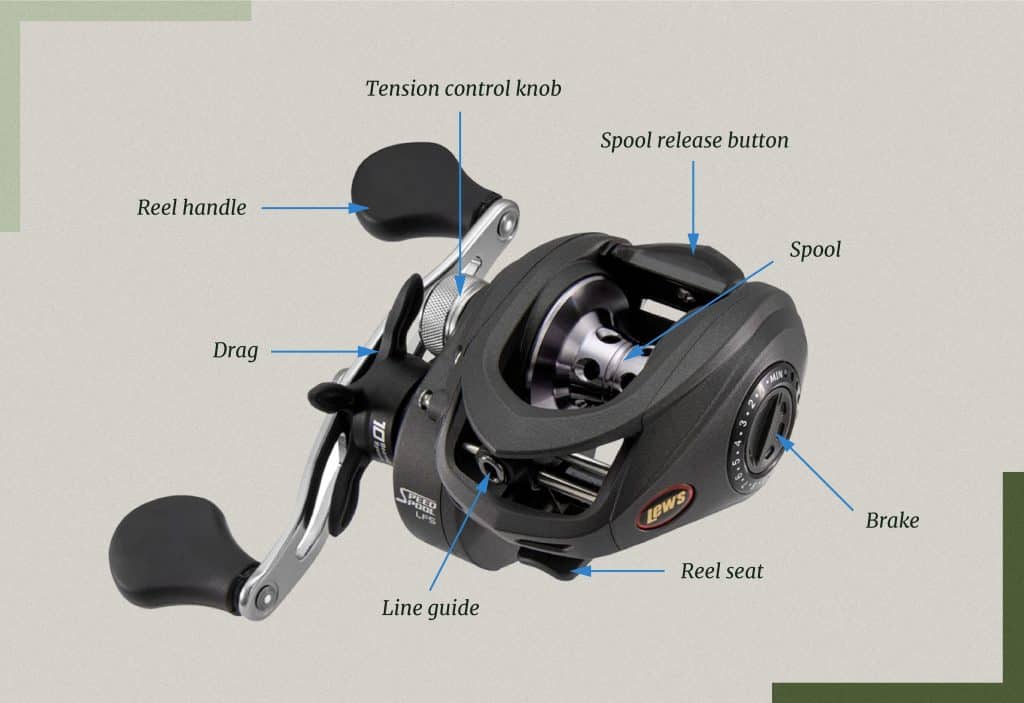
We’re stepping up our game now to talk about baitcasting reels and everything you should know about them. There’s a lot more going on here but I want to make sure that we’re all on the same page.
You don’t need to be afraid of these reels. So many people (myself included) think that they can’t use a baitcast reel because they’re so used to operating a spinning reel.
You shouldn’t feel that way and once you get the hang of casting one, it’ll be second nature.
Features
Starting with the basics, a casting reel sits on top of the rod and the eyelets run on top with it. It is semi-closed with a limited area where water and debris could get in.
This is because a lot of people use baitcasters for saltwater fishing so it’s best to prevent sand and salt from getting into the internals.
The drag mechanism rests on the top but most baitcasting reels feature two added knobs or adjustments that you don’t find on other reels.
They come with a spool tension knob and a braking control as well.
Let’s talk about these a little.
We all know that the drag control applies pressure to the line when a fish is trying to swim away with your lure.
Too much drag and you’ll spend all day trying to get the fish to quit, not enough drag and you’ll snap your line because you’re applying too much equal pressure in the opposite direction of the fish.
The spool tension knob is one of the most challenging aspects of a baitcasting reel to learn.
It prevents the spool from turning faster than the line is flying off of it.
So, let’s play out a scenario here. If you’re casting into a slight breeze, the spool will continue to spin at the rate of motion you created during your cast.
The wind is going to impact how quickly your line is flying through the air.
As the line is slowing down in the air, the spool is still spinning line off even though the line a few feet out is no longer going anywhere. The end result?
It’s called a bird’s nest. You end up with a big mess of line all tangled inside the reel.
Long story short, the tension knob and braking system will help the spool identify the speed of the line mid-cast and it’ll automatically slow down if it feels that the line is starting to slow.
Casting with a Baitcaster
Casting a baitcasting reel is simple once you understand all the previous. You’ll press the release, put your thumb against the line, and cast as you normally would.
When your lure hits the water, you’ll press the clip to lock the line back in place and start retrieving.
PRO TIP: Baitcasting reels fall into two categories, round, and low-profile. Low profile reels are becoming more popular because they’re easier to hold and more versatile for inshore fishing. The round baitcasters are the ones you see on fishing charters. They hold a ton of line and cast for really long distances. Keep that in mind when you’re shopping around!
Best Practices
At this point, if you read the features section you understand most of what you need to do to operate a casting reel properly.
The reason many people choose to use a baitcaster over a spinning reel is because of the added power, control over the cast, and flexibility in terms of lure and line choices.
You can use a much heavier line with a baitcaster and pair that with much larger crankbaits and spinners.
It’s also crucial to understand how the tension and braking system are impacted by the size of your lure. Keep in mind that you’ll need to adjust them based on the lures you’re using.
There’s no standard way to explain this and you’ll just have to figure it out as you go but larger lures may require less tension because they’ll cut through the wind easier.
That’s not always the case though so don’t hold me to it!
Conventional/Trolling Reels

Many manufacturers are finding ways to increase the versatility of their spinning and baitcasting reels for offshore fishing but nothing can compare to the power and line capacity of a conventional reel.
Features
These reels are what you’ll see most commonly with deep sea game fish. They’re made using heavy-duty graphite and machined aluminum.
They have a semi-open design and an oversized handle to help you crank in larger fish like Tuna, Marlin, or Snapper.
Conventional reels also feature a multi-disc drag system to handle the large line capacity and extended retrieval period necessary to bring a large fish into the boat.
Keep in mind that battles with deep sea fish can last upwards of 15 minutes with some really aggressive species like Mahi Mahi.
They usually come with a lever action drag system with multiple speeds that allow you to control every aspect of your line during the retrieval.
This is far different from the other types of reels for fishing and the main reason why conventional reels are still necessary for serious deep sea angling.
You’ll recognize these drag systems by the audible clicker that tells you how quickly the big fish is swimming away with your lure.
Casting with a Conventional Reel
Backlashing is a serious issue with conventional reels because you don’t get the same level of forgiveness as you would with a baitcaster.
It’s recommended that you set and forget the spool tension and make it as free as possible because playing around with it and constantly trying to adjust to meet the needs of unique scenarios will only complicate things.
You want to keep your thumb lightly on the spool throughout the whole cast as well and be ready to brake at a moment’s notice.
If you run into a hard backlash you’re going to lose your lure and deep sea lures are not cheap.
Best Practices
I recommend learning how to fish conventional reels from an expert deep sea fisherman. The best way to do this is by chartering a boat and going out for the first time with a captain and team of deckhands.
These experienced anglers will ensure you catch something so you’ll always have the opportunity to learn from them how to cast, troll, and retrieve using this type of reel.
Fly Fishing Reels

We’re going to simply “touch” on the last type of reel because I could write an entire 3,000 word article on fly reels without even realizing it.
A fly reel is a whole different animal and you could get by with an ultralight spinning reel in most cases.
Features
Fly or centerpin reels are designed for precision fly fishing but in reality, their main job is to simply store the line and backing because most of the action and presentation is created by the angler.
They’re lightweight, basic, and generally very affordable.
One major difference between fly reels and all other types is the spool of a fly reel is called an arbor. Some have a large arbor and others have a small arbor.
Those with a small arbor can hold additional heavy line because the centerpiece of the reel takes up less space.
They’re made with an assortment of different fishing reel materials with the ultimate goal of making the reel as resistant to scratches and damage as possible.
One small dent can throw off the entire reel making it unusable.
Casting with a Fly Reel
Once again, I could write an entire article around casting with a fly reel (and I will) but let’s keep it simple. The whole purpose of fly casting is inertia.
It’s all about building up power with something called a back cast.
You’ll have to manually pull the line off the reel and hold it in your hand. You’ll then quickly cast over your head or to the side in the opposite direction of where you want to cast.
Do this quickly and powerfully and the rod will generate energy that will snap it back in the opposite direction which will be your forward cast.
Best Practices
When choosing a fly reel I find that it doesn’t have to be overly complicated. When it comes to flies it’s so much more about the rod and the technique of the angler than it is the reel itself.
The main purpose of the fly reel is to hold the line and it serves as more of a storage device than anything. Don’t overthink it.
How to Choose a Fishing Reel
Settling on one of the different types of fishing reels is simple. Think about your level of experience, where you fish, and what type of fish you want to catch.
Here’s a little chart to help you make that choice. Keep in mind, this is 100% complete opinion. This is my opinion and someone else may disagree with it and that’s fine.
This is what I’ve found to be the most popular preferences over the years.
| Reel Type | Water | Location | Species | Skill Level | Price Range |
| Spincast | Freshwater | Ponds/Lakes | Panfish/Bass/Trout/Catfish | All | $20-50 |
| Spinning Reel | Fresh/Salt | Ponds/Lakes/ Inshore Salt |
All Inshore | All | $50-500 |
| Baitcasting | Fresh/Salt | Inshore/ Offshore |
All Inshore/ Some Offshore |
Intermediate | $50-500 |
| Conventional | Salt/Surf | Offshore/Surf | All Offshore | Advanced | $200-1000 |
| Fly Reel | Freshwater | Rivers/Ponds | Panfish/Bass/Trout | Intermediate | $20-250 |
Frequently Asked Questions
What are the different types of fishing reels?
The different types of fishing reels are spinning, spincast, baitcasting, conventional, and fly reels.
Which type of reel is best?
The best beginner reel is a spinning or spincast reel and as you gain experience you can move up to a baitcaster. Many people go their whole lives without every fishing a baitcaster though.
Final Thoughts
Choosing between the different types of fishing reels is simple when you understand what you want based on your technique, style, experience, and budget.
I highly recommend starting with a spinning reel or spincast and gradually experimenting with the others. Don’t dive right into a baitcaster because they do take some getting used to.
All in all, you should have everything you need to get out there and make an informed purchase. Thanks for reading and I hope this guide has helped you.
If you have any questions, please don’t hesitate to drop a comment below and I’ll be sure to answer it! Good luck out there!


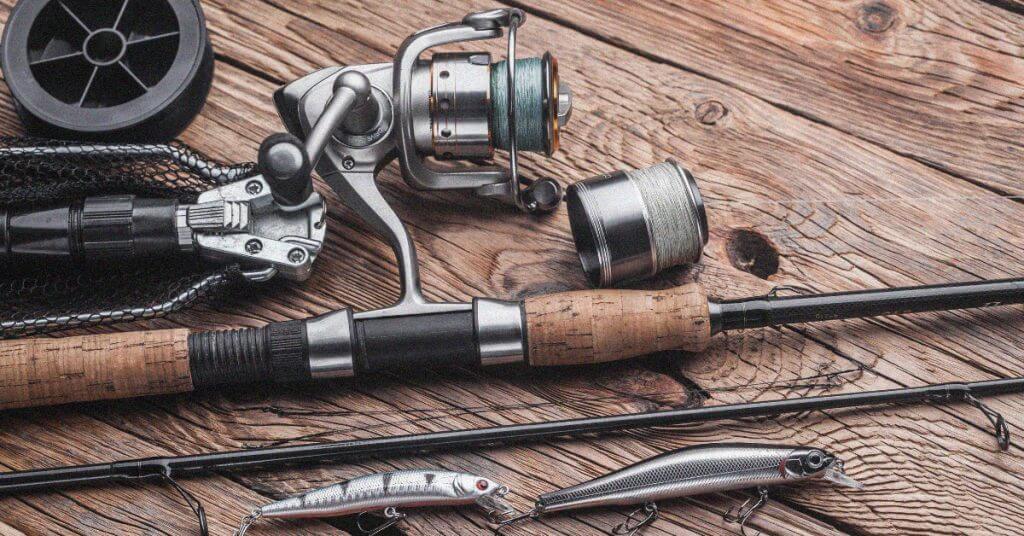
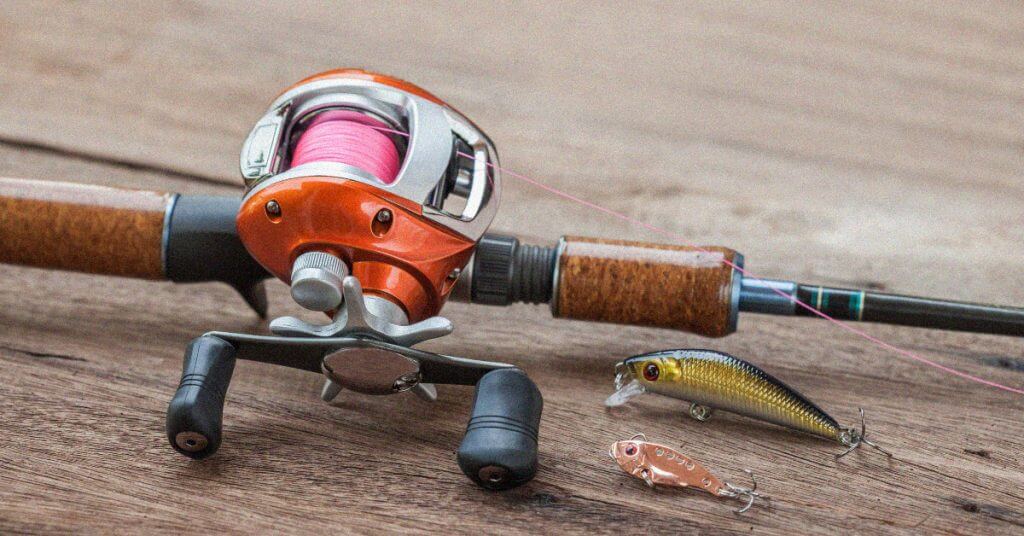
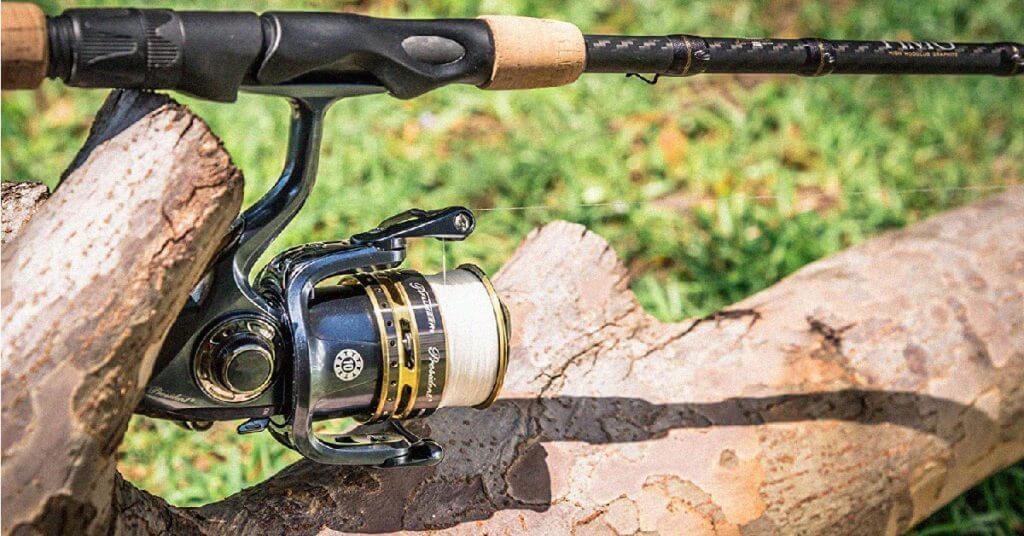
Great information without getting too deep.
I have fished with spinning reels almost all of my life.
I often use a fly rod if I’m in a boat. Plenty of clearance.
Never have mastered the bait caster, but I do have a few.
South Carolina, 63 yrs. Santee, Lake Murray and various ponds.